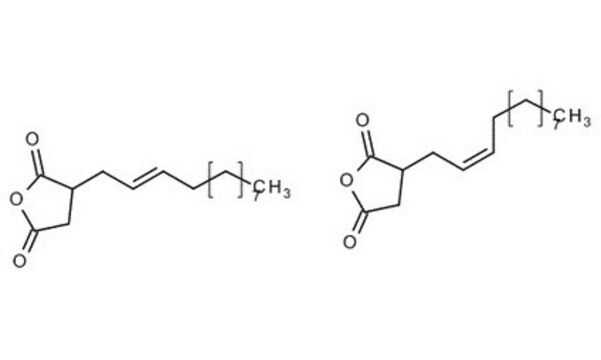381276
Silica Inorganic Sorbent
120-140 mesh, 99.8%
Sinonimo/i:
Silica, fumed, Silica, Silicic anhydride, Silicon dioxide, Silicon dioxide amorphous
About This Item
Prodotti consigliati
Nome del prodotto
Silica, 99.8%
Grado
standard
Saggio
99.8%
Stato
powder
tecniche
LPLC: suitable
Area superficiale
175-225 m2/g
Matrice
Silica
Gruppo funzionale matrice
silica
Dimensione particelle
0.011 μm
Dimensione pori
60 Å mean pore size
Tecnica di separazione
hydrophilic interaction (HILIC)
Stringa SMILE
O=[Si]=O
InChI
1S/O2Si/c1-3-2
VYPSYNLAJGMNEJ-UHFFFAOYSA-N
Cerchi prodotti simili? Visita Guida al confronto tra prodotti
Descrizione generale
a. Quartz: = 1143K
b. Tridymite: 1143 - 1743K
c. Cristobalite: = 1743, over 1973K it forms amorphous vitreous silica glass.
Applicazioni
Caratteristiche e vantaggi
Altre note
Codice della classe di stoccaggio
13 - Non Combustible Solids
Classe di pericolosità dell'acqua (WGK)
WGK 2
Punto d’infiammabilità (°F)
Not applicable
Punto d’infiammabilità (°C)
Not applicable
Dispositivi di protezione individuale
Eyeshields, Gloves, type N95 (US)
Scegli una delle versioni più recenti:
Possiedi già questo prodotto?
I documenti relativi ai prodotti acquistati recentemente sono disponibili nell’Archivio dei documenti.
I clienti hanno visto anche
Articoli
One of the more traditional photovoltaic devices, single crystalline silicon solar cells were invented more than 50 years ago, currently make up 94% of the market. Single crystalline silicon solar cells operate on the principle of p-n junctions formed by joining p-type and n-type semiconductors.
Il team dei nostri ricercatori vanta grande esperienza in tutte le aree della ricerca quali Life Science, scienza dei materiali, sintesi chimica, cromatografia, discipline analitiche, ecc..
Contatta l'Assistenza Tecnica.



